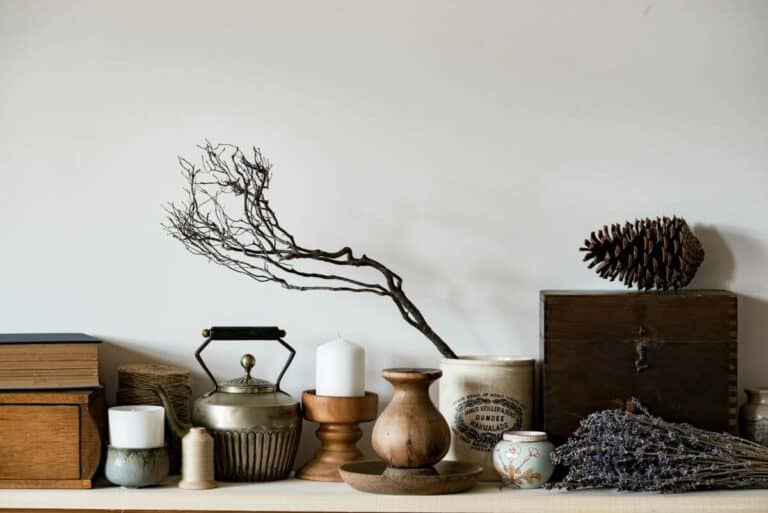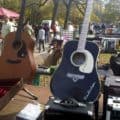Embarking on a flea market adventure is not just a shopping trip; it’s a dive into history, a treasure hunt and an exercise in savvy negotiation all rolled into one. And there is plenty of invaluable advice to be gleaned from years of navigating these eclectic markets. Whether you’re a seasoned collector or a first-time visitor, understanding the nuances of flea market shopping can transform your experience from overwhelming to exhilarating.
There’s an art to successful flea marketing. Some tactics (like keeping money tucked away) are useful at any flea market, while others are specific to a particular place. For instance, at a flea market in France, if you don’t begin an exchange with “Bonjour, Madame/ Monsieur,” you’re finished. For those planning a trip to France, we’ve made a handy little guide about to make the most of a flea market shopping trip there, and a list of 10 idioms which are typical at French flea markets.
Flea markets are treasure chests full of potential. From the elusive piece that completes a collection to the unexpected find that captures your heart, the variety of offerings is limitless. But navigating these markets takes more than just luck; it requires strategy, knowledge and a keen eye. Here’s a comprehensive guide to mastering the flea market, so that every visit is not only productive but also enjoyable.
The art of flea market shopping: A detailed guide
Timing is everything
Arriving early is more than just a suggestion; it’s a crucial strategy for success. The most sought-after items tend to find new owners quickly, so getting there before the crowds means getting the first crack at the unique finds.
Research and preparation
A successful flea market trip starts long before you arrive. Knowing what you’re looking for, its usual market price and its distinguishing features can make all the difference. This preparation will not only help you identify genuine items, but will also protect you from fakes masquerading as the real thing.
Assessing quality and authenticity
The true value of an item often lies beneath the surface. In furniture, check the construction – dovetail joints, the absence of modern staples or glue and original finishes can all indicate quality. Similarly, a repair isn’t a deal-breaker; it can actually make the item more affordable, provided it’s done well.
Talk to the seller
Talking to sellers can reveal a lot about an item’s provenance and value. A simple question about the item’s history can not only provide you with useful information, but also show the seller that you’re a serious buyer.
Express your interest
In the hustle and bustle of a flea market, showing interest in an item can be as simple as placing your hand on it. This gesture sends a clear signal to both the seller and other shoppers that you’re considering a purchase.
Negotiation Tactics
Negotiating the price is part of the flea market experience. Using creativity and humour in your negotiations can make the process more enjoyable for both you and the seller, and may result in a better deal.
Be money wise
It is important to keep your money safe and accessible. A hip belt is recommended as it allows you to shop hands-free while ensuring your cash and cards are secure.
Measure and fit
Knowing the dimensions of the room you’re shopping for can save you disappointment. If you forget your tape measure, improvising with a known measure – like the width of a Canadian dollar bill – can be a quick fix.
Positive interactions
Approach every negotiation with enthusiasm for the subject. Negative comments are unlikely to endear you to the seller or lead to a favourable deal. Remember that the seller has invested time and effort in acquiring each piece, and a respectful dialogue can lead to mutually beneficial outcomes.
Explore beyond local boundaries
Shopping with a global perspective
Travelling offers unique opportunities to explore flea markets around the world, each offering a glimpse into local culture and history. Whether it’s artwork, antique boxes or local delicacies, shopping at local markets enriches your travel experience and supports the community.
Art and antiques as souvenirs
Original works of art should be on every traveller’s shopping list. Easy to transport and rich in memories, art is a tangible part of your journey. Similarly, antique boxes and serving trays can add a distinctive touch to your home, combining utility with beauty.
Textiles and local crafts
Antique textiles and lace can be transformed into home decor, offering a creative way to bring a piece of your travels into your everyday space. Not only are these items portable, but they also embody the craftsmanship and aesthetics of the places they come from.
Savour local flavours
Flea markets aren’t just about objects; they’re also a gateway to exploring local cuisine. From jams and pâtés to unique spices, buying local delicacies allows you to relive your travels through taste.
Collect memories
Even items such as leather-bound books, although heavier, will add a unique charm to your collection or decoration, reminding you of your adventures and the stories behind each find.
In conclusion, flea market shopping is an art form that combines intuition, knowledge and negotiation. With these detailed strategies and tips, each visit can be a rewarding journey into the past, an opportunity to connect with different cultures, and a chance to find items that resonate with your personal story. Whether you’re browsing local markets or exploring abroad, the world of flea markets is rich with opportunities just waiting to be discovered.



